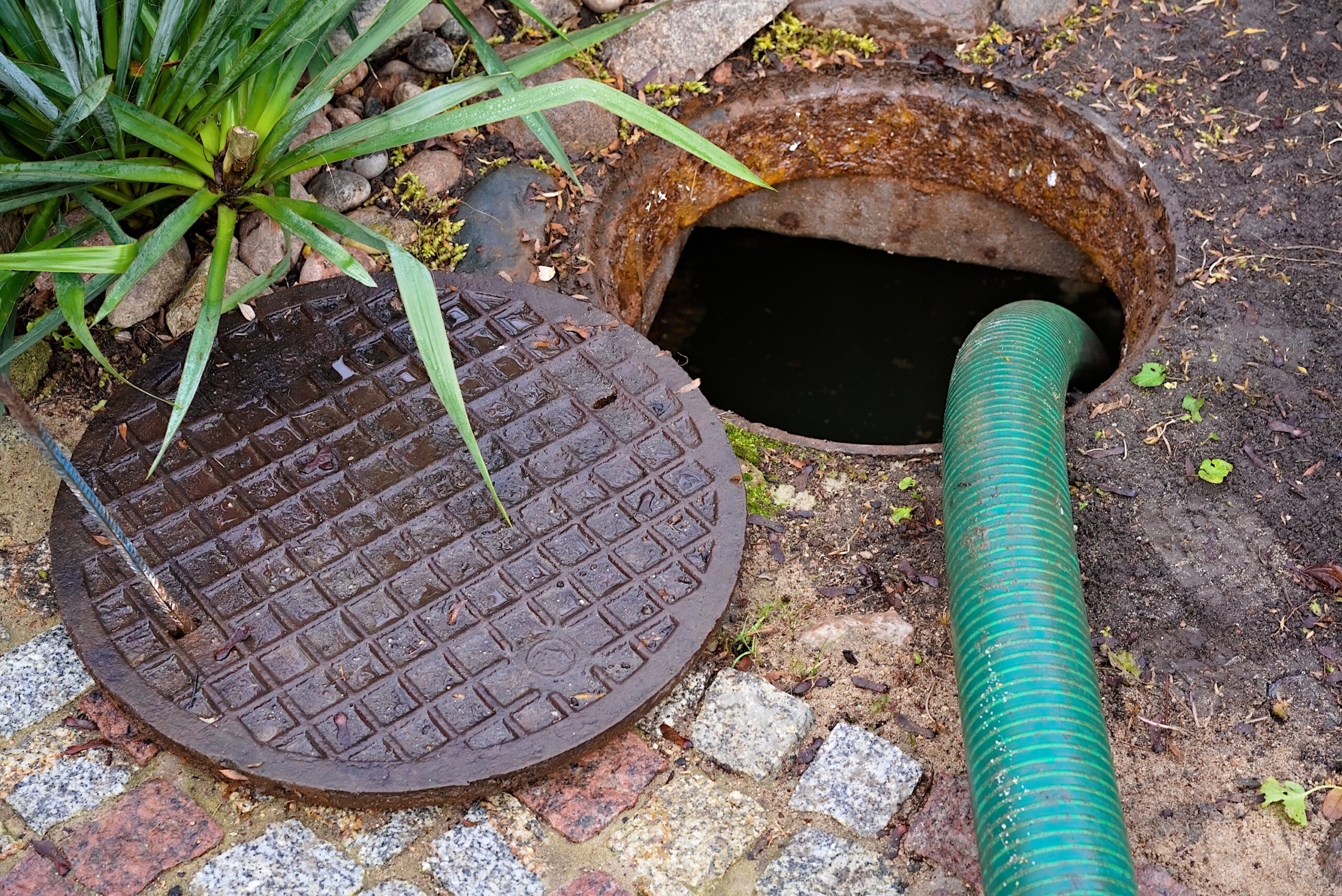We have been telling septic tank owners for months on this blog that one of the most important preventative maintenance tasks they can perform is to have their septic tank pumped at the appropriate time. How, though, does a septic tank owner determine if their septic tank needs pumping? This is an important question to answer as pumping too frequently costs money and robs the septic system of the bacteria it needs to process organic waste and infrequent pumping reduces the septic tank’s capacity to process organic waste.
The only reliable way to determine if a septic tank needs pumping is to measure how thick the sludge and scum layers are in the septic tank. Sludge and scum layers accumulate over time. Remember, the sludge layer is on the bottom of the septic tank and the scum layer floats on the top of the water. (Note: the water between the scum and sludge layers is called the clear zone.) The sludge layer contains organic solids that had time to settle out of the incoming wastewater. The scum layer is mostly comprised of fats, oils and grease, also known as FOG.
The general rule of thumb for septic tank owners is to monitor the thickness of the sludge and scum layers and pump when these layers consume thirty percent of the volume of the septic tank. For example, suppose a septic tank is designed for a liquid depth of seventy five inches. Pumping this septic tank is advisable when the scum and sludge layers combine for a depth of twenty two inches – thirty percent of seventy five is roughly twenty two inches.
If the sludge and scum layers are allowed to accumulate to depths greater than the recommended limit of thirty percent of the volume of the septic tank, the function of the septic tank is compromised. This is due to the fact that the time organic solids suspended in the incoming wastewater have to settle into the sludge layer is greatly reduced, Consequently, higher concentrations of solids will be forced out of the septic tank and into the rest of the septic system., specifically the drainfield. If the septic system is anaerobic, the likelihood that a biomat is growing in the drainfield is high and any increase in the levels of organic solids entering into the drainfield will only speed the growth of the biomat, hastening the development of septic tank problems and, in the worst case, the failure of the entire septic system.
So, it is obvious that monitoring the thicknesses of the sludge and scum layers is an important preventative maintenance task septic tank owners should engage in. The next question is should they do this monitoring themselves or leave it to their septic tank pumper to perform?
It is the opinion of this website that the septic tank owner should perform the measuring and monitoring of the scum and sludge layers. It is not that difficult or frequent a task to perform and can provide the septic tank owner with insight as to how their septic system is performing. Being better informed about the performance and operational state of their septic tank allows them to intelligently work with their septic tank pumper. It also improves the odds a septic tank problem will be detected early, which usually means it can potentially be resolved in a timely and cost effective manner.
So, if you own a septic tank, get involved and monitor the depths of the scum and sludge layer. The knowledge you will gain will help you make better decisions down the road. The next question to ask is how best to measure the depth of these layers in the septic tank? Do the owners purchase a device to perform the measurements or can they develop a cheaper alternative method? The answer comes in the next blog!











